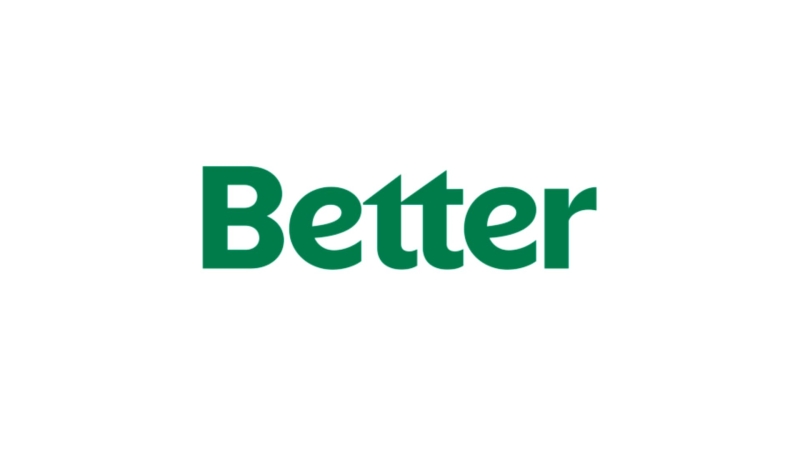Advertisement
Increasing Sales Requires Front-End Muscle

Some readers may be too young to remember, but back in the 1970s, the American automobile industry went through a rough period similar to what the mortgage industry is going through today. That’s when new, more restrictive emission limits became law at the same time automakers were required to start using larger, heavier bumpers to make cars safer. There was also an oil crisis brought on when OPEC cut exports to the U.S. As a direct result of these events, compact, fuel-efficient, mostly foreign-made cars became the rage. American automakers were forced to innovate and build safer, cleaner vehicles to keep up with the new standards—and the competition. “Muscle cars” like the Pontiac GTO and the Dodge Challenger disappeared while others, like the Ford Mustang, were downsized, losing power and performance—and sales.
Similarly, in the mortgage industry, recent events have forced lenders to reinvent themselves and improve their back-end processes. With stricter lending criteria and the risk of loan buybacks, plus Dodd-Frank and the Consumer Financial Protection Bureau to make sure they follow the rules, lenders really have no choice. As a result, many lenders have upgraded their loan origination systems, loan auditing tools and other technologies to minimize risk and operate more efficiently.
In the push to create better, safer mortgages, however, some lenders are not matching these back-end expenditures with similar investments in their sales and marketing teams. At times, it seems as if the need to create high-quality mortgages is more important than actually selling them.
In the push to create better, safer mortgages, however, some lenders are not matching these back-end expenditures with similar investments in their sales and marketing teams. At times, it seems as if the need to create high-quality mortgages is more important than actually selling them.
For sure, loan quality and compliance are important. Yet many mortgage professionals are struggling to succeed in a rapidly changing market with the same contact strategies and tools they used more than 10 years ago. By neglecting the latest sales technologies, lenders risk losing out to the growing number of competitors that are investing money into sales engines that actually fuel growth.
Front end spending is growing
Earlier this year, my company, in partnership with Velma Marketing and Mortgage Coach, conducted a survey of more than 500 lenders and mortgage professionals that delved into the reasons behind how growing lenders reinvested in their businesses. According to the results, a growing number of lenders are in fact planning to increase spending on technology to improve sales. Despite all the attention being placed on compliance, many lenders plan to spend more on sales and marketing than on tools to improve loan quality.
Front end spending is growing
Earlier this year, my company, in partnership with Velma Marketing and Mortgage Coach, conducted a survey of more than 500 lenders and mortgage professionals that delved into the reasons behind how growing lenders reinvested in their businesses. According to the results, a growing number of lenders are in fact planning to increase spending on technology to improve sales. Despite all the attention being placed on compliance, many lenders plan to spend more on sales and marketing than on tools to improve loan quality.
Specifically, lenders with significant purchase loan volume have invested in or plan to spend on lead management, referral management, analytics and marketing automation tools, in that order. According to our survey respondents, the most popular reasons behind their investments are to drive growth, improve sales processes and increase customer retention, also in that order. Compliance was the fourth most popular driver behind respondents’ technology investments.
The survey results were very insightful. On one hand, they reflect the fact that the purchase loan market hasn’t been as strong as many had hoped. Lenders that need to grow in an increasingly competitive market understand they must maximize their existing leads and convert them at a higher rate. But the survey also showed that consumer-direct lenders had already invested significantly on sales technology and, coincidentally or not, had grown at a much faster rate than retail lenders. These lenders have embraced the Internet and new technologies such as lead management software and automated dialers much earlier and faster than the rest of the market.
To me, these results are a wakeup call for retail lenders, especially those that are not reinvesting in sales and rely too heavily on referral strategies. If they hope to compete in an age of the always-online consumer, retail lenders and their sales teams need to invest as heavily in the front end of their business as they do on the back end.
Speed is top priority
Our survey results also suggest that speed is important to lenders. I see two trends driving this demand. One is that lenders have now replaced real estate agents as the initial point of contact for most consumers looking to buy a home. Because financing has become so complicated to the consumer, it’s more important to know if you qualify before going to look at homes. Second, research now shows that a majority of borrowers now start their search for a mortgage online. Most borrowers know they can get pre-approved online in just minutes, which means they are less likely to wait for a lender to call them back.
Speed is top priority
Our survey results also suggest that speed is important to lenders. I see two trends driving this demand. One is that lenders have now replaced real estate agents as the initial point of contact for most consumers looking to buy a home. Because financing has become so complicated to the consumer, it’s more important to know if you qualify before going to look at homes. Second, research now shows that a majority of borrowers now start their search for a mortgage online. Most borrowers know they can get pre-approved online in just minutes, which means they are less likely to wait for a lender to call them back.
Lenders investing in front-end technology do not intend to miss those opportunities. When a potential borrower raises his or her hand to show interest in a loan—whether through Zillow, Realtor.com or another third-party site, or through the lender's own Web site—the lender needs to engage that borrower as quickly as possible. Research has found that lead conversion rates will double if a consumer is contacted within three minutes after submitting a Web site query. During the most recent refi boom, consumer-direct lenders were able to engage borrowers in just seconds, thanks to sales technology.
Mortgage sales professionals should also be savvy about how and when to respond to borrowers, and be ready to use a combination of techniques depending on each borrower's needs. That means responding by text, phone or e-mail, whichever is appropriate, and doing so when it is convenient for the borrower. Consistency counts, too. When a borrower lead comes in, many mortgage professionals reach out to the borrower once or twice and then give up if they fail to get through. But some of our other research has found that the ideal number of borrower touches is six. The problem, however, is that few mortgage professionals can be counted on to make six touches when they need to happen. Lead management and sales acceleration platforms can ensure such contact strategies are executed correctly and consistently.
Addressing the gap
As part of their front-end investments, many lenders are spending heavily on marketing automation. Yet much of this money is wasted because of inconsistent sales processes and a lack of insight on the effectiveness of the marketing strategies being used. This creates fumbles and missed connections that dampen sales performance. Worse, it can create frustration between sales and marketing teams when the results don’t live up to the hype.
Addressing the gap
As part of their front-end investments, many lenders are spending heavily on marketing automation. Yet much of this money is wasted because of inconsistent sales processes and a lack of insight on the effectiveness of the marketing strategies being used. This creates fumbles and missed connections that dampen sales performance. Worse, it can create frustration between sales and marketing teams when the results don’t live up to the hype.
For example, some automated marketing tools allow lenders to track online ad response rates. This information is tracked by marketing so they can learn what messages grab a borrower’s attention. However, in most cases, this information isn’t being transferred to sales as there is no single “system.” As a result, even with automated marketing tools, most lenders have no idea why certain borrower leads result in applications and others don’t.
Lenders can solve this problem with a more collaborative approach. By investing in technologies that merge sales and marketing tactics—including automated marketing tools—lenders and mortgage professionals can examine the effectiveness of their different strategies. This sounds complicated, but it really isn’t. Solutions are available today that help mortgage professionals and retail loan branches manage all marketing and sales activities on a single platform, so they are able to track individual marketing campaigns and channels and view the quality of borrower leads that come in. These tools can also weigh the readiness and motivation of each potential borrower, so that when sales professionals engage that borrower, they can be much more prepared to help them.
Investing in technologies that close the gap between marketing and sales will help lenders excel in an environment in which loans take longer to close. In some cases, the time it takes for a borrower lead to result in a closed loan can be six months or longer. Every day that goes by is another opportunity for that lead to fall through the cracks. By leveraging technology, lenders will have a much easier time nurturing borrowers and keeping them engaged until they are ready to move forward.
The bottom line is that technology investments should not be limited to solving business issues that take place only after an application is received. Technology should be leveraged to actually engage borrowers and increase applications. For some lenders, this will require a shift in thinking away from depending solely on the wits and resources of their sales teams and a reconsideration of the Internet and mobile technology as a lead channel. For others, it will require the harder lesson of watching competitors do what they won’t.
To get back to our automobile analogy, mortgage professionals should also keep in mind that, while muscle cars like the Pontiac GTO and Dodge Challenger went out of style during the 1970s, they are back with a vengeance today. Technology is a huge reason why. New innovations have made it possible to build cars that are safe, fuel efficient (or relatively so!) and capable of performing on a high level. There’s no reason why mortgage lenders cannot do the same.
 Chris Backe is director of financial services at Velocify, and a sales automation expert with more than 20 years of experience offering technology solutions to multiple industries. Chris has spent the last 10 years in the financial services industry, holding various positions at companies including Ellie Mae and Salesforce. He can be reached by e-mail at [email protected].
Chris Backe is director of financial services at Velocify, and a sales automation expert with more than 20 years of experience offering technology solutions to multiple industries. Chris has spent the last 10 years in the financial services industry, holding various positions at companies including Ellie Mae and Salesforce. He can be reached by e-mail at [email protected].
 Chris Backe is director of financial services at Velocify, and a sales automation expert with more than 20 years of experience offering technology solutions to multiple industries. Chris has spent the last 10 years in the financial services industry, holding various positions at companies including Ellie Mae and Salesforce. He can be reached by e-mail at [email protected].
Chris Backe is director of financial services at Velocify, and a sales automation expert with more than 20 years of experience offering technology solutions to multiple industries. Chris has spent the last 10 years in the financial services industry, holding various positions at companies including Ellie Mae and Salesforce. He can be reached by e-mail at [email protected].This article originally appeared in the October 2016 print edition of National Mortgage Professional Magazine.
About the author





